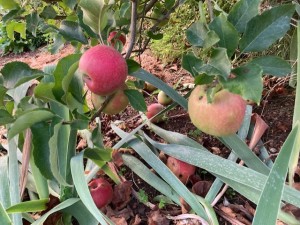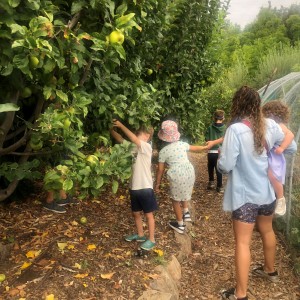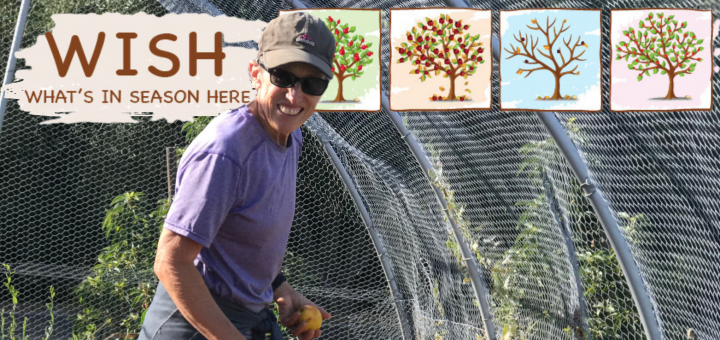With Rosh Hashanah and the new year upon us, it’s time to celebrate this special Fall holiday. We’ll blow the shofar and dip apples in honey in hopes for a sweet new year.
Apples are prevalent during the fall. There are approximately 7,500 varieties of apples grown in the world with 2,500 apples grown in the US. They are a great source of fiber, antioxidants and various vitamins and minerals.
Apples are a unique fruit that has a long storage ability, meaning that they can be kept for months, making them available essentially all year long.
This isn’t true with other fruits and vegetables that have a specific time or “season” to grow, be harvested and eaten. For example, here in California, peaches and other stone fruits are ready to consume in the summer. That is when they are at their peak of freshness and ripeness. Nothing compares to eating a sweet, juicy peach with the juices running down your chin! If it’s your first peach of the season, it’s definitely a Shehecheyanu moment.
While peaches are a summer treat, they are (unfortunately) available year long as they are grown and shipped from other countries. Why is this a concern? In order for fruits and vegetables to get to the U.S., they need to be picked before they’re ripe. This greatly affects the flavor and the nutritional value as well as the environmental impact, from increased air pollution to use of fuel.
So instead of buying corn, another summer favorite during the winter, or asparagus, a spring delight, let’s put into practice WISH: What’s In Season Here.
WISH not only connects us to what is being grown locally but aligns with many Jewish values such as Hoda’ah—Appreciation, Kavod ha Teva—Honoring Nature and Brit Adamah—Partnership with the Earth. Perhaps a lesser-known value, Sh’mirat HaGuf—Caring for the Body, encourages young children and their families to develop lifelong healthy eating practices. In future blog posts, we’ll explore these values as they relate to WISH.
with the Earth. Perhaps a lesser-known value, Sh’mirat HaGuf—Caring for the Body, encourages young children and their families to develop lifelong healthy eating practices. In future blog posts, we’ll explore these values as they relate to WISH.
How to best engage in WISH? Ideally, we would each grow our own food; however, that isn’t possible for many people. Grocery stores can provide some in-season produce yet one needs to be mindful of whether it is actually being grown locally.
Farmers markets are an excellent source of in-season produce and make it possible to talk directly to the farmer. Often this produce is organically grown, making it an even greater benefit.
“U-Pick” farms and orchards allow you to come and pick your own, everything from local strawberry fields to apple orchards, just in time for Rosh Hashanah…
Shana Tova!
Debbie
“Food choices matter because they are the most consistent, ethical decisions we make throughout the day.”
-Rabbi Shmuly Yankowitz







Comments are moderated and will not appear immediately.